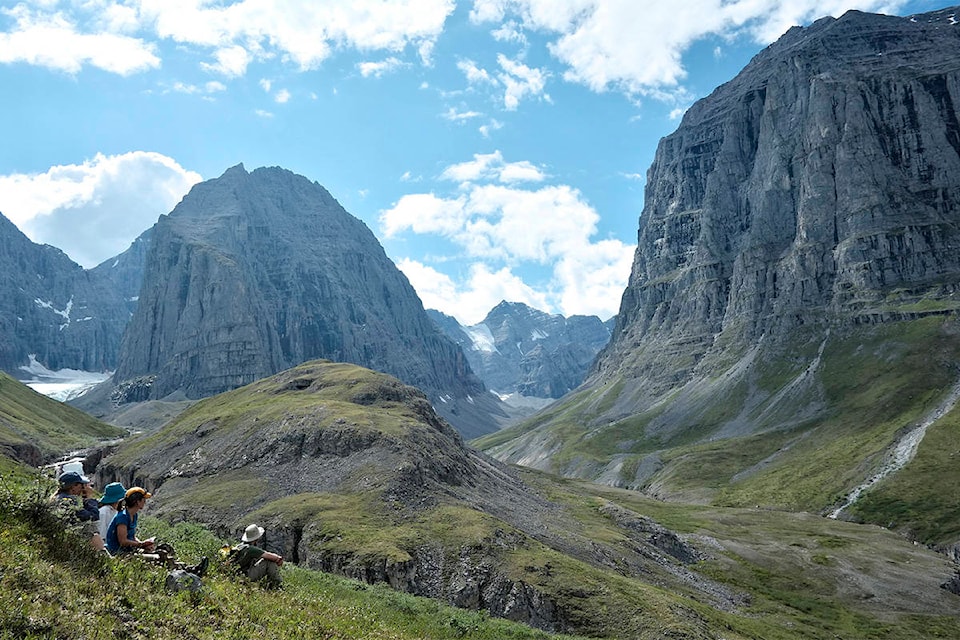The results of the final public consultation for the Peel Regional Land Plan were released Feb. 26, and the data is clear — the majority of Yukoners would like to see additional protections to the Peel watershed above those outlined in the final plan.
According to the survey – conducted by Stantec as part of the land use consultation process – 64.5 per cent of comments expressed a desire to have more protection of the watershed.
“Respondents feel that the protection of this vast and pristine wilderness is important in a global, national and local context,” the report says. “People want to protect this area because of its valuable habitat, threatened species and to support First Nations traditional uses.”
Additionally, 40 per cent of the respondents said they wanted to have 80 per cent of the conservation area permanently protected. Under the recommended plan, 25 per cent of the Peel would be under “interim” protection status, meaning it could be revisited for development.
Whether or not a change that large can actually be made to the final plan is up for debate. Now that the consultation is finished and the document compiled, it’s back to the table for discussions between all the involved parties on how those comments should or can be applied to the final plan, Jerome McIntyre, Director of Land Planning for the Yukon government said in an interview following the report’s release.
Chris Rider, the executive director of the Yukon branch of Canadian Parks and Wilderness Society (CPAWS), said that the government has a duty to consider the comments that have come out of the consultation. Things are not entirely that cut and dried, however, McIntyre said.
There are two things at play here, said McIntyre; the duty of the government to give “full and fair consideration” to the comments that have come out of the report under Chapter 11 of the affected First Nations’ final agreements and the 2017 Supreme Court of Canada decision on the matter, which affects “what we can modify” said McIntyre, as that decision called for “minor” changes to be made to the plan.
“The parties themselves have to sit down and dialogue changes (about) what can be done,” he said.
That discussion process is already underway, said McIntyre.
There was an “organized campaign around” the idea of having 80 per cent protection for the Peel, McIntyre said.
The report noted that both CPAWS and the Yukon Conservation Society (YCS) “have been involved in the Peel Watershed planning process for many years” and that they jointly under took a campaign in October and November 2018 “to encourage people to get involved in this engagement process.”
“Through this campaign, CPAWS and YCS encouraged people to support the Final Recommended Plan, but with some modifications. CPAWS and YCS encouraged the public to change the 25 per cent interim protection to permanent protection to bring more certainty to the region giving the Peel 80 per cent permanent protection,” the report said.
At a Feb. 26 press conference regarding the release of the report, Rider said his organization’s role was to encourage people to participate in the consultation process, “not to change people’s minds.”
“People already feel strongly (that) the Peel deserved protection,” he said.
“We trust the judgement of Yukoners and hope the government will too.”
Mike Walton, executive director of the YCS, said his organization would “be in support of increased protection” in the Peel because the present “threat to biodiversity is so serious and that translates to the health and well-being of humans.”
Also at issue are the mining claims which already exist within the Peel Watershed, many within areas which are proposed to be protected. There are presently 8,380 quartz mining claims and 525 iron mica claims “existing within the planning area,” McIntyre noted, although numbers on how many of those fall within protected regions wasn’t available by press time.
The report also noted that many “comments and questions were received about existing mining claims in the proposed protected areas,” and people wanted clarity about “how development might be allowed to proceed while still meeting the goals and intent of the Plan.”
McIntyre said those claims would still be recognized within the Peel and would have the potential to be developed, but that they would have to do so within the confines of the plan, which would “probably make it very difficult to fully realize the potential” of those claims.
Only 3.3 per cent of respondents said they wanted more of the area opened up to resource extraction, the report found. Comments were received both for and against compensating existing mineral claim holders.
The report also found that “there was support for the final plan” as it presently exists, with 32 per cent of respondents not requesting any additional changes to it. Many of these respondents noted that the plan “was the outcome of much collaboration, engagement and compromise and represents a balanced view.”
“Many people feel the this process has gone on long enough and are ready to see the Plan impliemented,” the report noted.
The News reached out to the Vuntut Gwitchin First Nation and to representatives for the Tr’ondëk Hwëch’in and Nacho Nyak Dun First Nation, which are affected by land use in the Peel. They were not available for comment by press time.
Contact Lori Fox at lori.fox@yukon-news.com.
This story has been edited to correct the spelling of Chris Rider’s last name and the total number of comments received. The News regrets the error.
